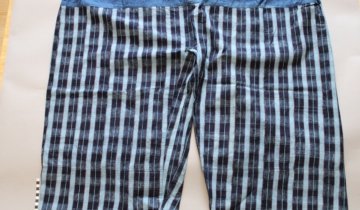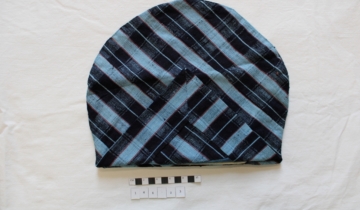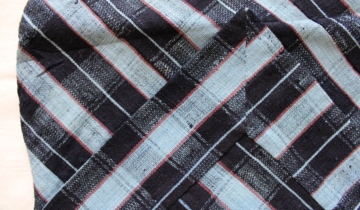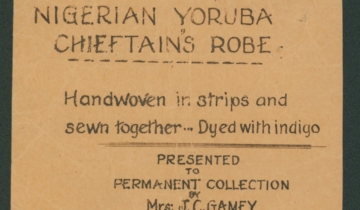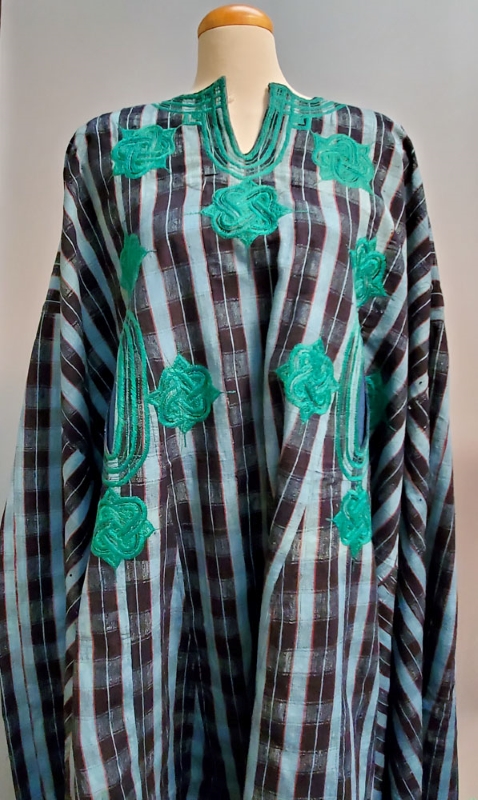
Robe
Outfit worn as formal attire; known as an agbádá in Yoruba and typically worn by men. Handwoven fabric dyed with indigo. Consists of a tunic (dashiki), pants (sokoto), and aso oke hat (fila). The dashiki is embroidered in green with endless knot motifs. The creation process for an agbádá – dyeing, weaving, sewing, embroidering – is done completely by men and is typically a collaborative process. This piece may have been created for the person who brought it to Canada.
Tenue de cérémonie appelée agbádá en yoruba et généralement portée par des hommes. Tissé à la main et teint à l’indigo. Se compose d’une tunique (dashiki), d’un pantalon (sokoto) et d’un chapeau aso oke (fila). Le dashiki est brodé en vert avec des motifs de nœuds sans fin. Le processus de création d’un agbádá – teinture, tissage, couture, broderie – est confié uniquement à des hommes qui travaillent généralement en collaboration. Cette pièce a peut-être été créée pour la personne qui l’a apportée au Canada.



